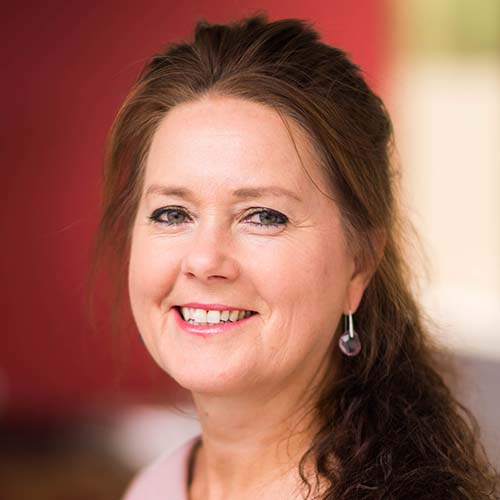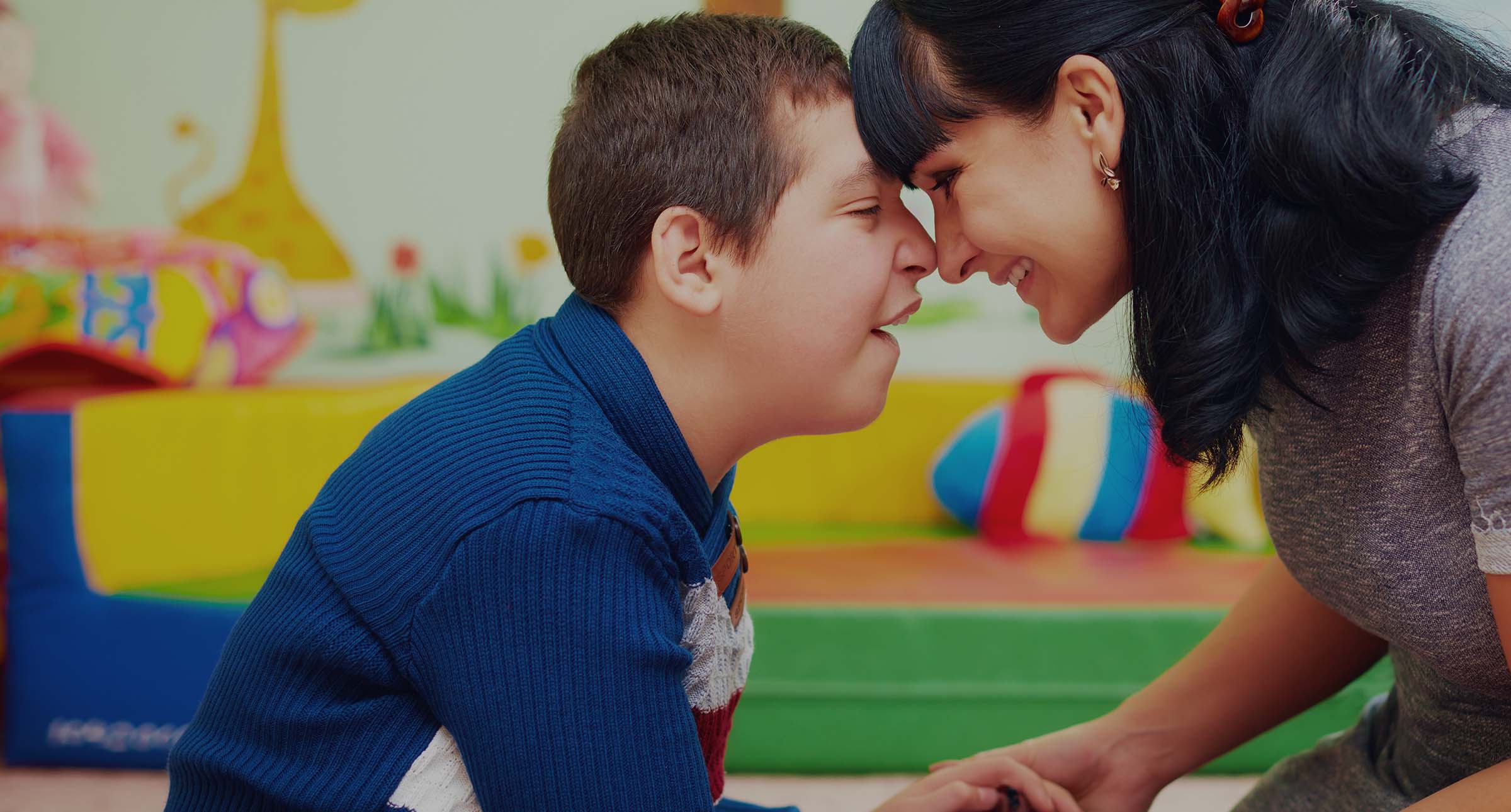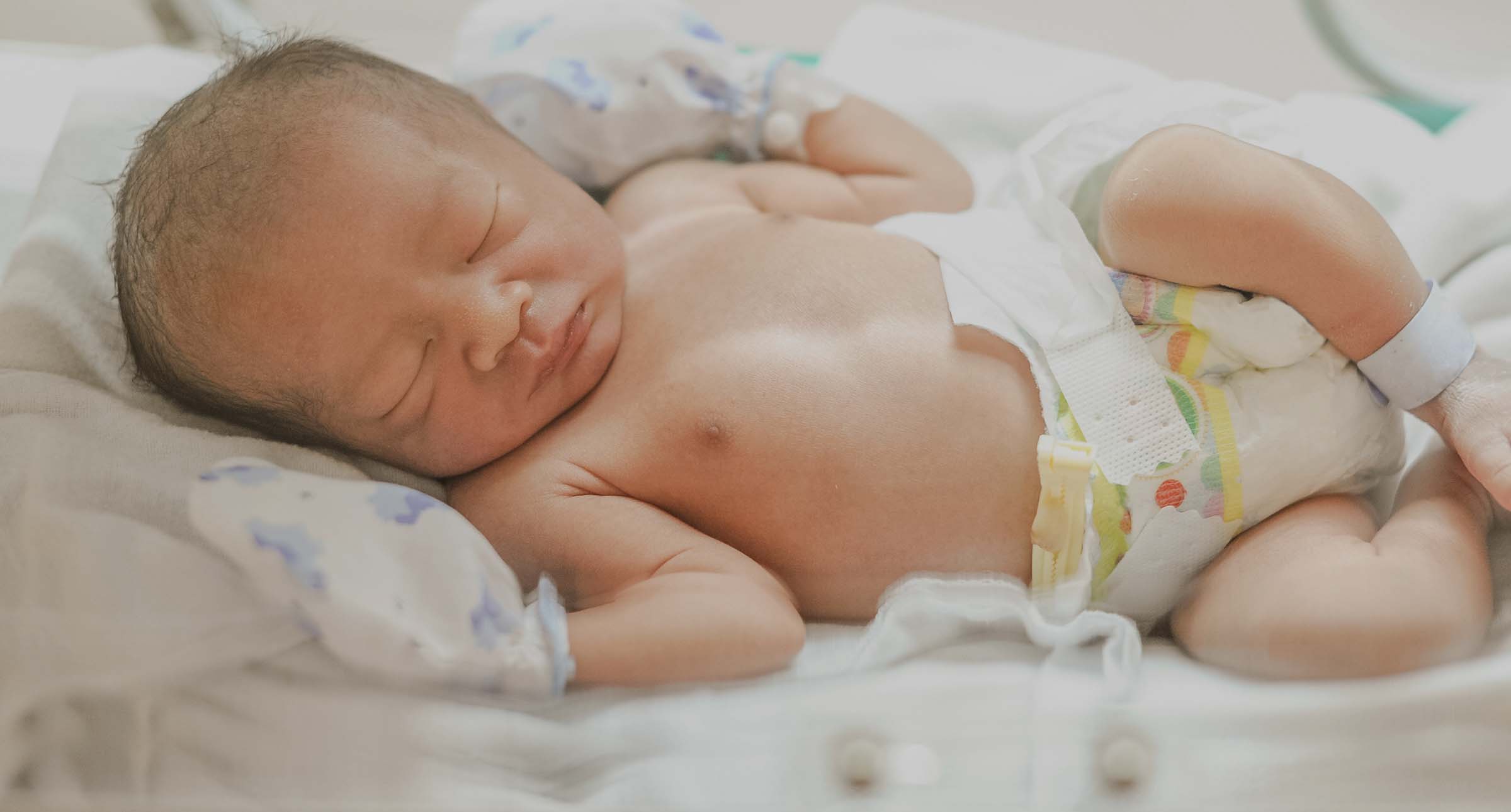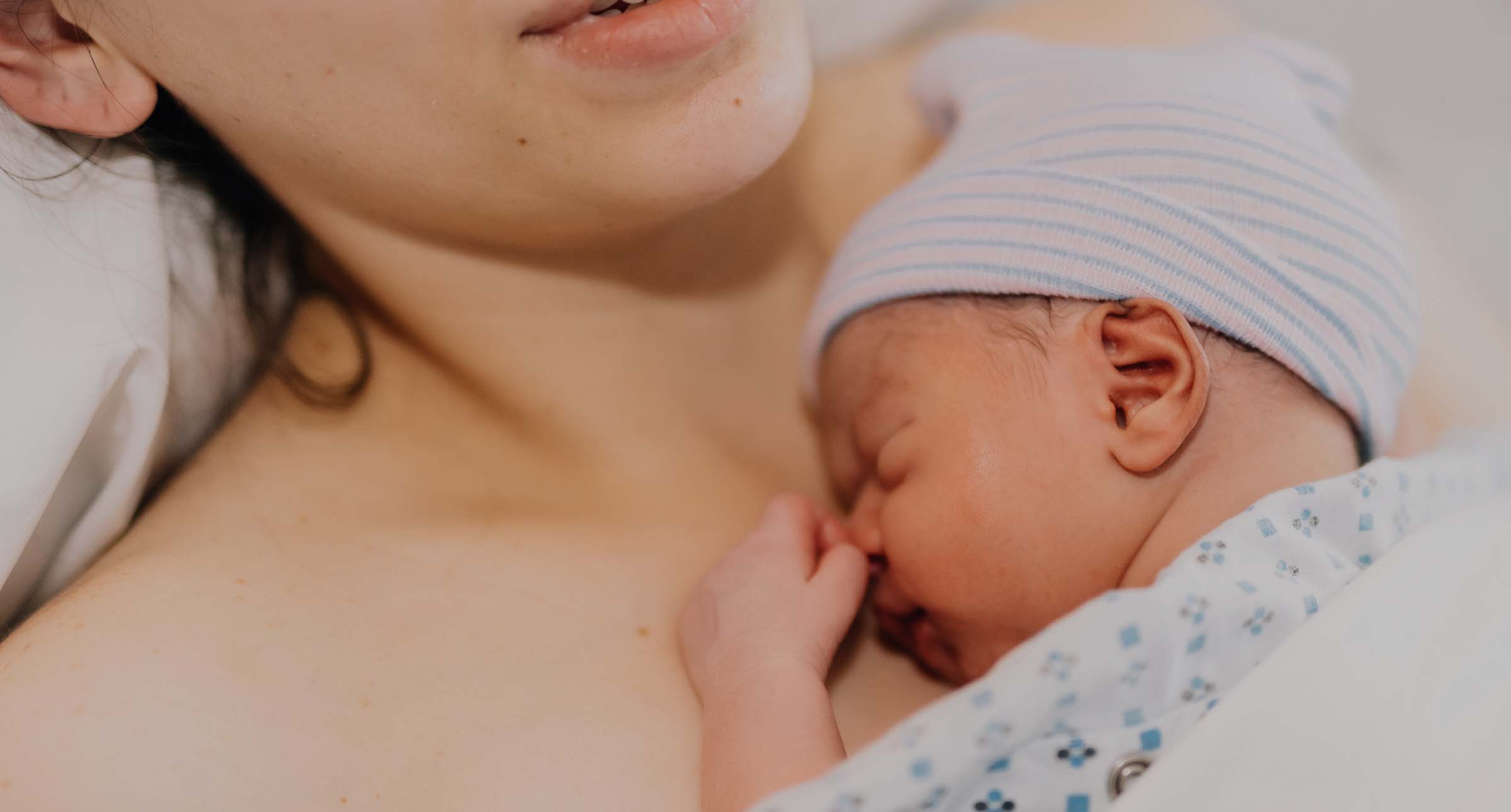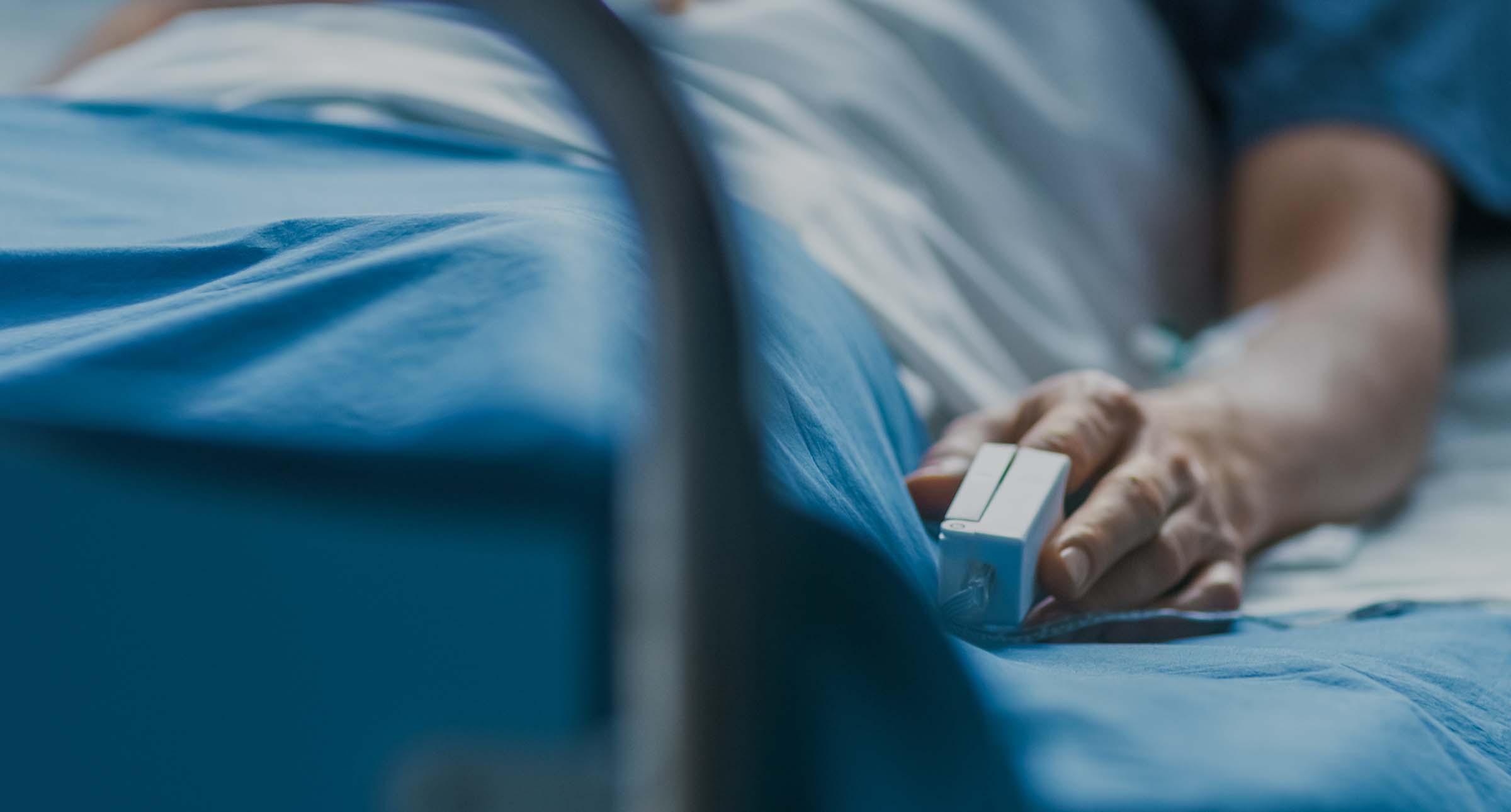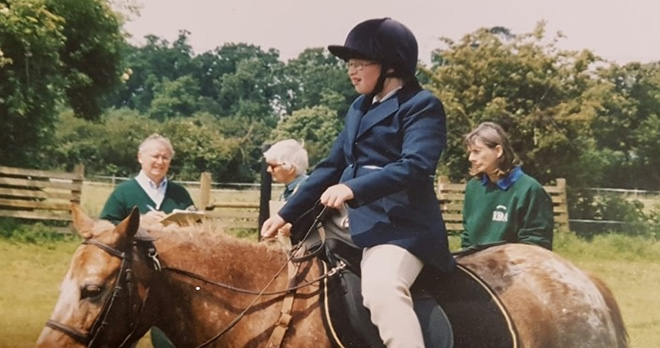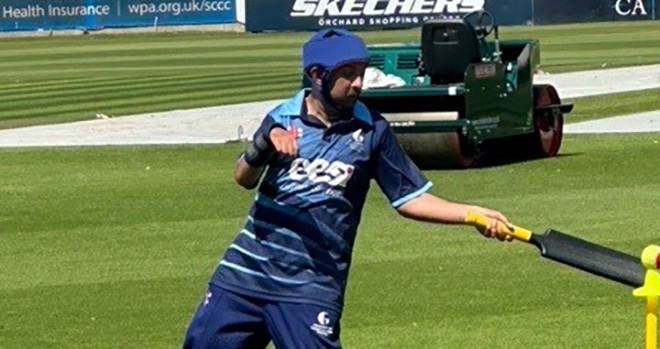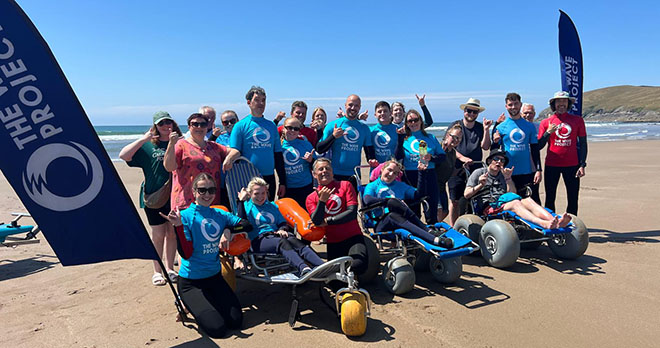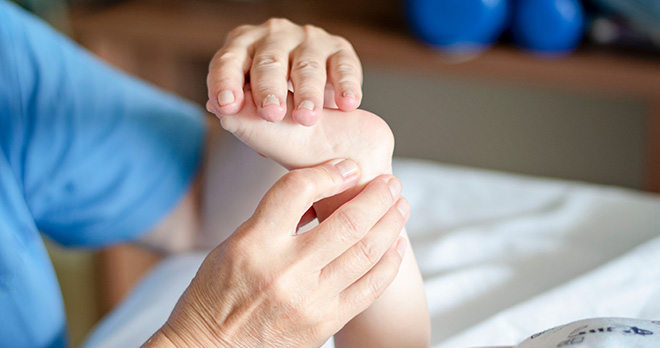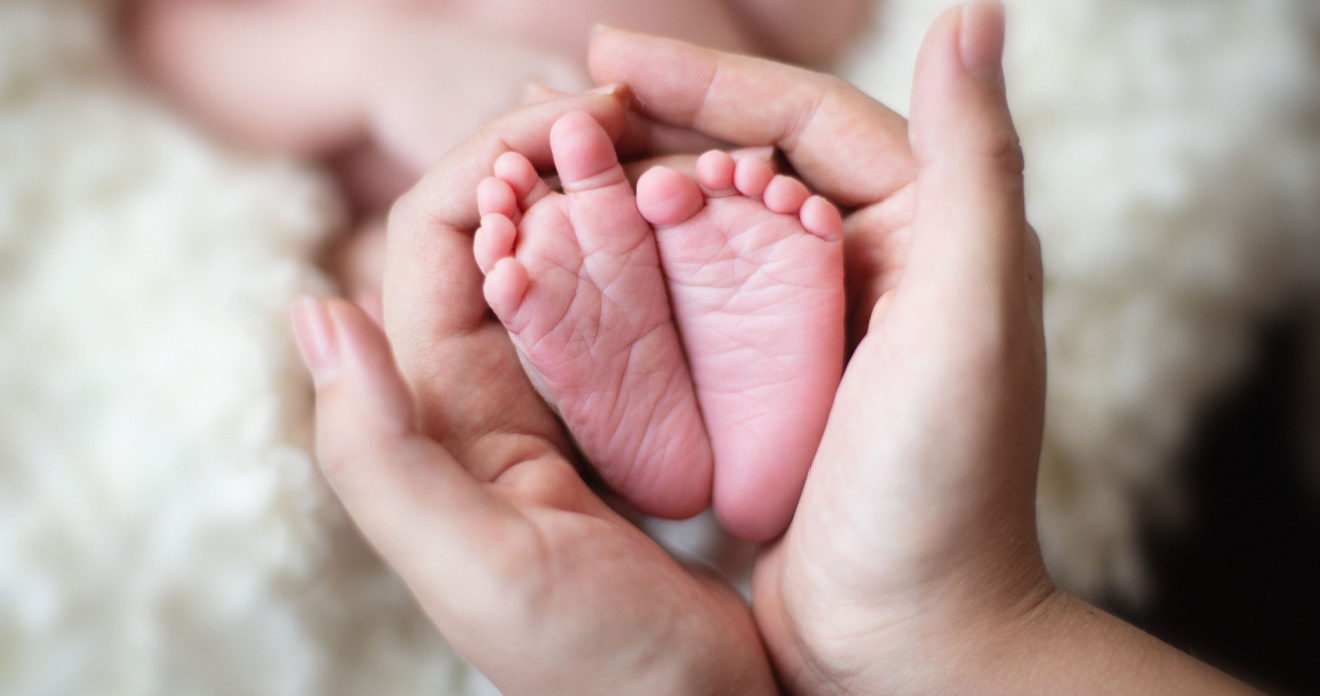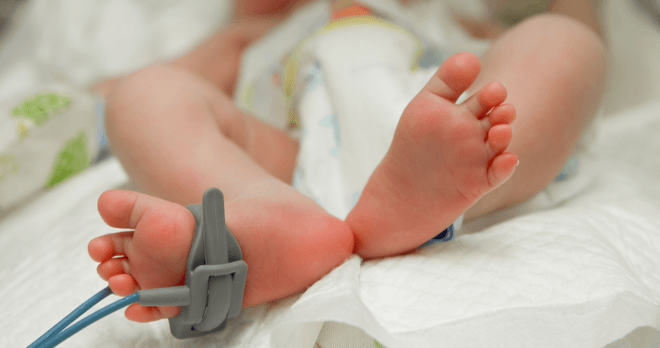

Cerebral palsy claim solicitors
Our specialist cerebral palsy solicitors are here to help you get the compensation deserved when your child has cerebral palsy as a result of a birth injury.
Call for a free consultation on whether you have a claim
Cerebral palsy solicitors, on your side.
Whatever the circumstances leading to your child's injury, our cerebral palsy solicitors are here to help you to make a claim when there's been substandard care.
If you would like to claim compensation for a birth injury to your baby, talk to one of our compensation experts in a free initial consultation. Our cerebral palsy compensation lawyers will look into your case, talk with you about what you’ve been through and together we can work out if you have a claim.
RWK Goodman are the right choice:
- We are nationally recognised specialists in birth injury cases and have recovered millions of pounds for hundreds of children who have suffered a brain injury as a result of negligent medical care.
- You and your child will be supported by an expert team including some of the country’s leading medical, therapy and nursing experts and specialist barristers, to work towards a successful outcome and to maximise compensation.
- We are usually able to offer children affected by cerebral palsy Legal Aid Funding which will ensure your child keeps 100% of their compensation.
- We will listen to your story and make ourselves available to suit you.
- We will ensure that compensation is secured in compliance with your personal and religious beliefs.
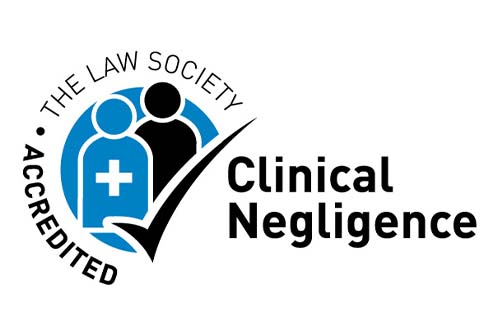
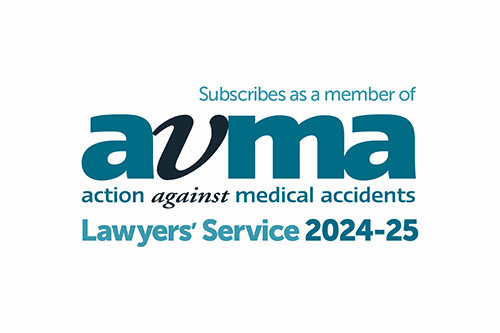
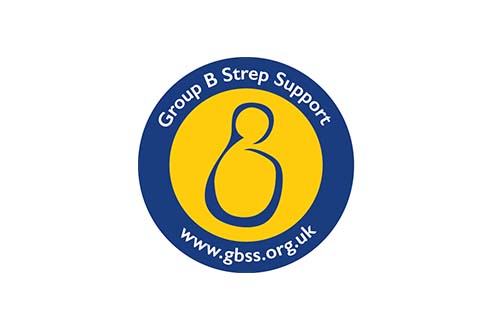
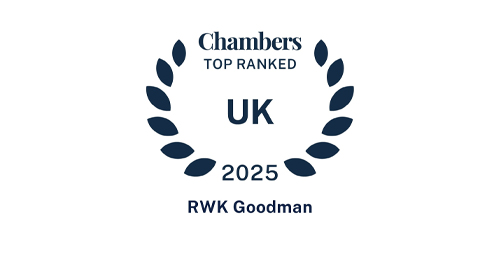
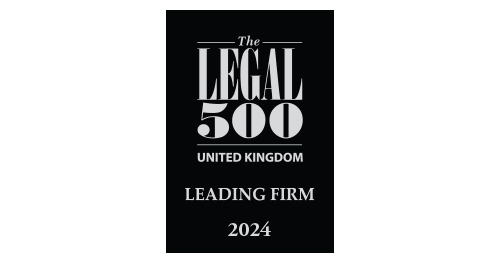
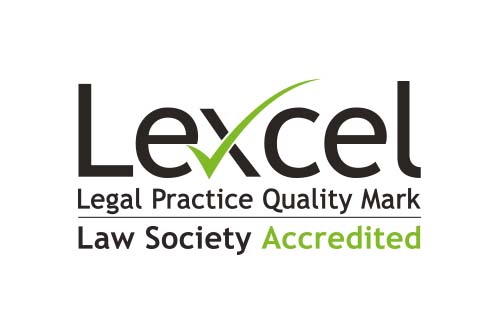
Call for a free consultation on whether you have a claim
We are cerebral palsy experts with a proven track record.
We have proven track record of securing high amounts of compensation under exceptionally complicated circumstances. To protect our client's identity we have not used their full names.

L’s Story
L is a little boy who has quadriplegic spastic cerebral palsy and learning difficulties due to a shortage of oxygen when he was born.
Since L was born, his family have struggled to pay for the therapy and equipment he needed. Kerstin Scheel and Abigail Ringer represented L in his claim and secured over £10 million for L so he now has the funds to maximise his quality of life. We asked L’s mum what difference the compensation has made to them as a family: “This settlement is absolutely life changing for L. We can now afford to purchase equipment to support him that is innovative, moulded and tailored to his exact body shape and his specific needs. L is also able to work with a team of highly specialist therapists who are brilliant and cover all aspects of his therapy requirements, in time frames that are personalised to his development. He now has a fantastic team of support workers that provide care to an exceptional standard and assist L with accessing his environment. L’s everyday life has been completely enriched and we are so excited for his future.”

A’s Story
A is a little girl with quadriplegic cerebral palsy after her birth was complicated by compression of the umbilical cord so that she suffered a shortage of oxygen to her brain.
A and her family are Muslims. With experience in ensuring compensation is managed in accordance with Islamic Law, we ensured A’s compensation was complaint with the family’s beliefs on Riba and Zakat and that A’s compensation was invested in a Shariah compliant investment portfolio. A’s dad commented: “As practicing Muslims, we had concerns regarding our daughter’s finances being invested in a Halal manner and whether it would be subject to Zakat. Respecting our faith, our solicitors got in touch with an Islamic scholar who issued a Fatwa regarding the matter. This was and will be a great help for us as we wouldn’t know where to start in getting a judgment from a renowned Islamic Scholar.”
"Thankfully for us, we chose to be supported legally by RWK Goodman. It was our best decision. They were compassionate throughout every step, informative and all worked alongside us like extended family members from start to finish."
Choosing the right lawyer to look after your child’s Cerebral Palsy claim is incredibly important. At RWK Goodman we know how to combine compassion with strategic focus, to get you and your child the results they deserve.
Call us
Message us today for a no obligation chat about your circumstances and we can help you understand what we can do for you.
Information and FAQs
We have free information about Cerebral Palsy and FAQs to help you understand the process of bringing forward a cerebral palsy claim.
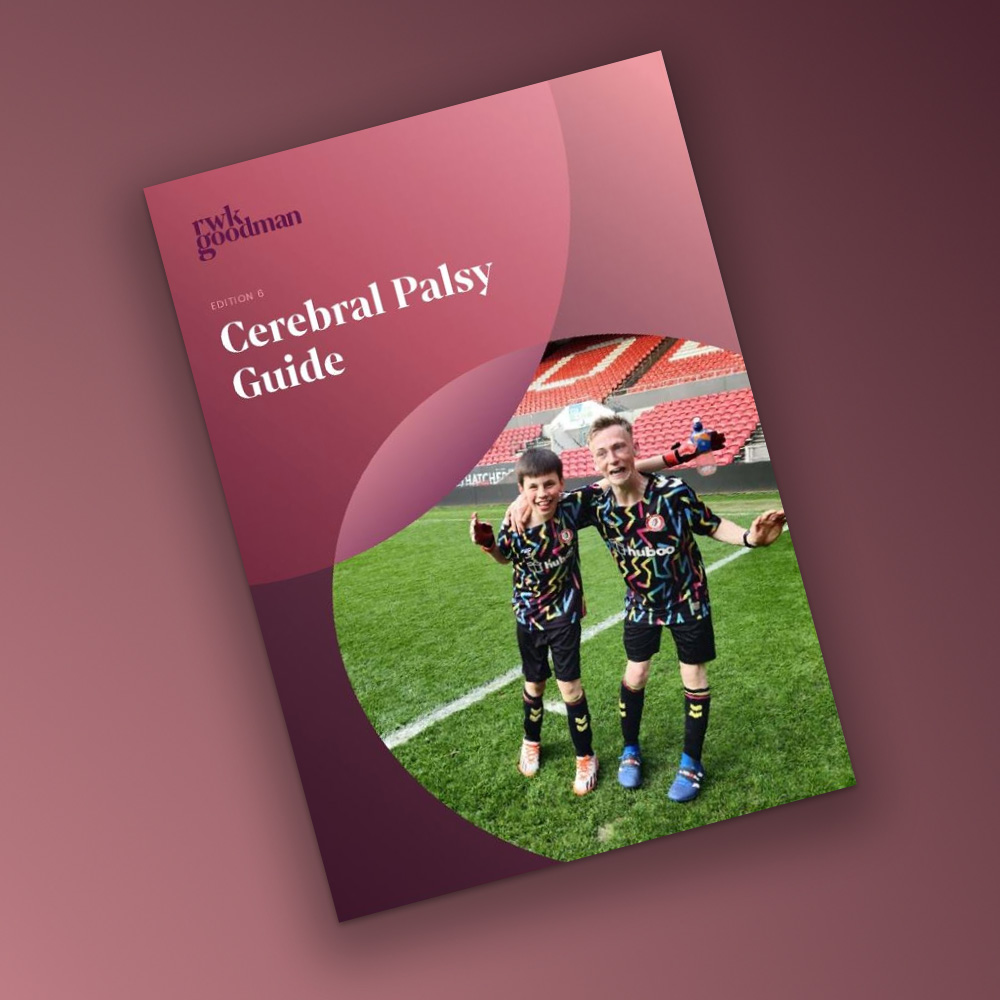
Read our free guide to cerebral palsy.
If you want to find out more about the condition, we have built a comprehensive guide to cerebral palsy to help you understand diagnosis, treatment and the process of making a claim in more detail.
Find out all you need to know about the condition, treatments, support available and more in our guide.
Our birth injury experts have collated a range of information for families affected by cerebral palsy in this comprehensive guide.

Ideas and advice for Little Champions.
Our guide to being a Little Champion is full of ideas and advice to ensure your Little Champion reaches their full potential.
Make sure to visit our Little Champions guide for more information on the support available to children with disabilities, including cerebral palsy. The guide features hints on where to find local government support, ideas for days out and holidays, suggestions for technology that may assist your child with daily tasks, and much more!
Is there a time limit to making a claim for cerebral palsy?
Usually, you have three years from the date of injury or the date of knowledge of injury.
However, with injuries to children, this is extended to three years from their 18th birthday.
The time limit will usually not apply where the injured person lacks the mental ability to understand or bring a claim.
How much are cerebral palsy claims worth and what will the compensation help with?
The process of bringing a compensation claim for cerebral palsy is particularly complicated and undertaken often over a number of years, which is why we strongly recommend you instruct specialist solicitors.
At the end of this process, damages will hopefully be awarded to compensate you and your child and to provide your child with the care, support and equipment they will need for the rest of their life.
What are the funding options when making a cerebral palsy claim?
We are one of the few firms who still offer Legal Aid funding.
To be eligible you or your child must have suffered a neurological injury at birth or within the first eight weeks of life. Other forms of funding are available, for example, no win no fee agreements.
We will seek to take the stress away in arranging funding for the case and will undertake all work in setting up the funding of the claim, free of charge.
Making a complaint to the hospital
Sometimes it is useful to make a complaint to the hospital to find out more details about the care you and your child received.
What is the Early Notification Scheme? And how does is affect my claim?
The Early Notification Scheme is designed to ascertain liability, with the Maternity & Newborn Safety Investigations forming a triage system for the ENS.
Recent cases and legal information
Medical negligence can be a complicated subject. to help you understand we have compiled this technical information.
WJB (A child through his mother and litigation friend ZEB) v University Hospitals Sussex NHS Foundation Trust (formerly Western Sussex Hospitals NHS Foundation Trust) (2022).
Simon Elliman and Sarah White secured a lump sum of £5,000,000 plus periodical payments (£220,000 per annum until December 2029 and £292,000 per annum thereafter) for a 12 year old child, in respect of the injuries sustained following the Defendant’s negligent management of his delivery in August 2010. He suffered hypoxic ischaemic brain damage and consequently from quadriplegic spastic cerebral palsy (GMFCS 5), epilepsy, visual impairment and severe learning difficulties. The Claimant is and will remain completely dependent on others for his activities of daily living.
The Claimant was delivered at 0728. The parties agreed that the CTG which commenced at 0609 on the day of delivery was pathological from the outset. It was the Claimant’s case that the response to the abnormality on the CTG was inadequate and that an obstetrician capable of making a decision about delivery should have been present by 0625, and delivery achieved by 0705.
The Defendant admitted that the doctor ought to have been called by 0628 (rather than 0630 as was the case in fact) and that delivery should have occurred by 0718.
In respect of causation, the parties agreed that the Claimant suffered chronic partial hypoxia continuing until his delivery. The Claimant alleged that the chronic partial hypoxia commenced at 0605 on the day of delivery and that with delivery by 0705 he would have avoided his injury. The Defendant accepted that if it was established that delivery ought to have taken place by 0705 its breach would have made a material contribution to the Claimant’s injury. The Defendant made the positive contention that even if the Claimant had been delivered by 0718, his condition would have been no different. The Claimant disagreed and argued an alternative case that extension of the chronic insult by 9 minutes (the admitted breach) would have made a material contribution to his injury.
After working towards a trial on liability, the parties agreed to settle liability at 80% prior to the exchange of expert evidence and judgment was entered for the Claimant in March 2018 with damages to be assessed. A stay in proceedings was ordered until 2020. When the stay lifted, the parties proceeded to undertake standard disclosure, to exchange witness statement evidence and exchange expert evidence prior to a settlement meeting which took place in December 2022.
The Claimant has profound learning difficulties and quadriplegic cerebral palsy. His motor function is classified as GMFCS V. He has epilepsy and visual impairment. He will remain dependent on others for care for life and will not have capacity as an adult or be capable of employment.
The Claimant’s symptoms are unlikely to improve. Having regard to the nature and extent of the Claimant’s injuries, it is likely that his life expectancy will be limited to age 39.8 years.
The estimated breakdown of the Claimant’s damages is as follows:
Pain, suffering and loss of amenity: £370,000 plus interest of £44,548 at 100% (£296,000 plus interest of £35,638 at 80%). (Simmons v Simmons uplift applied.)
Special Damages: Past care costs and past family expenses: £1,040,000; future loss of earnings: £340,000; future accommodation costs: £1,480,000; future household costs: £17,600; future therapy costs: £452,000; future assistive technology costs: £124,000; future aids and equipment costs: £220,000; future travel and transport costs: £248,000; future holiday costs: £258,000; future DIY, decorating and gardening costs: £32,762; psychological therapy: £36,000; and future Court of Protection and deputyship costs: £420,000. Future care and case management costs by way of annual periodical payments of £220,000 increasing to £292,000. (All these sums are at 80%).
In June 2023 Kerstin Scheel and Abigail Ringer secured a settlement of over $40 million on behalf of a little girl born in England but who now resides in the US, with quadriplegic cerebral palsy as a result of a failure to identify fetal growth restriction.
In May 2023, Kerstin Scheel and Abigail Ringer secured a settlement of over £13.7m on behalf of a 10 year old girl affected by developmental delay, truncal hypotonia and bilateral hearing loss due to a shortage of oxygen when she was born.
In February 2023, Simon Elliman, Sarah White and Abigail Ringer secured a settlement of over £12 million on behalf of a 12 year old boy who suffered hypoxic ischaemic brain damage and consequently from quadriplegic spastic cerebral palsy (GMFCS 5), epilepsy, visual impairment and severe learning difficulties.
In 2022 Kerstin Scheel & Abigail Ringer secured a settlement of over £9 million on behalf of a little girl affected by quadriplegic spastic cerebral palsy because of a shortage of oxygen when she was born.
In 2021 Kerstin Scheel and Abigail Ringer secured a settlement of over £24 million on behalf of a young boy affected by cerebral palsy, epilepsy and learning difficulties as a result of sustaining hypoxic ischaemic brain damage at birth.
In 2021 Kerstin Scheel and Abigail Ringer secured a settlement of over £10 million on behalf of a little boy affected by quadriplegic cerebral palsy and severe learning difficulties following a shortage of oxygen at birth.
Legal information
-
Common law tort of negligence
The law relating to medical negligence stems from the common law tort of negligence.
Common law (also known as case law) is the body of law that stems from judges’ court decisions over hundreds of years. Their judgements have set precedents, binding judges in the future to be consistent in their decision-making.
Torts are legal wrongs that one party suffers at the hands of another.
Tort of negligence is form of tort (legal wrong) that evolved because some types of loss or damage occur between parties that have no contract between them (with no contract, one party cannot sue another for damages).
Tort of negligence includes three essential elements that the claimant must establish (or prove) to bring a successful case:
- The defendant owed the claimant a duty of care
- The defendant breached their duty of care to the claimant (was negligent)
- The claimant has suffered injury and loss as a result of the breach of duty of care.
In medical negligence cases the duty of care between clinicians and patients is generally accepted without any argument.
It is harder to prove whether or not the defendant breached their duty of care to the claimant and what (if any) injury and loss was brought about from that breach of duty. Evidence from independent medical experts in the relevant medical fields is required to advise on these issues.
-
The ‘Bolam’ test to establish if a clinician has breached their duty of care to a patient
The starting point for any claim is to establish that there were shortcomings in the care provided which were sufficiently serious to amount to negligence.
In order to establish negligence, the Claimant needs to show through medical evidence that the treatment received fell below a reasonable standard. This is the standard to be expected of a reasonably competent practitioner, in the relevant field, at the relevant time. It would therefore be a defence to an allegation of medical negligence to show that a body of responsible practitioners in the particular field would have treated the patient in the same way in which he or she has been treated. This is known as the ‘Bolam’ test.
-
How to prove what injury a patient has suffered as a result of negligence - the ‘but for’ test
The starting point in clinical negligence cases is that the claimant must prove that the defendant’s negligence caused them to suffer injury that would not have otherwise happened.
This is known as the ‘but for’ test, i.e. ‘but for’ the defendant’s negligence, the injury would not have happened. The claimant is required to prove their case on the balance of probabilities, i.e. what is more likely than not to have been the case.
-
Understanding the arguments relating to material contribution to injury
A significant difficulty is that it’s not always possible for medical science to establish (on the balance of probabilities) the likely cause and timing of a particular injury that would be required to argue that the injury would have been avoided ‘but for’ the negligence.
For example, there may be two or more factors contributing to the cause of the injury. Or it may be that there was a negligent delay in a hospital providing medical treatment, but it cannot be identified whether the damaging period of time happened before or after the patient’s admission to hospital.
In such cases, we may be able to argue that the delay in treatment materially contributed to causing the injury (even though we cannot say by how much); and that the period of time before and after admission needs to be taken as a whole so that it’s not necessary to prove when the injury occurred during that timeframe.
To help, the doctrine of material contribution to injury has been developed, providing a different approach in cases where the ‘but for’ test cannot be established either way.
The doctrine of material contribution in relation to a clinical negligence case, was confirmed by the Court of Appeal in 2008:
“In a case where medical science cannot establish the probability that ‘but for’ an act of negligence the injury would not have happened but can establish that the contribution of the negligent cause was more than negligible, the ‘but for’ test is modified, and the claimant will succeed.”
The following scenario illustrates the concept of material contribution:
- A number of factors caused the claimant’s injury cumulatively, either concurrently or consecutively
- One or more of the factors was caused by the defendant’s negligence
- The injury suffered is indivisible
- The claimant cannot establish that ‘but for’ the defendant’s negligence the injury would probably not have occurred as a result of uncertainty in medical science
- The contribution of the defendant’s negligence was more than negligible.
In cases where the claimant has suffered an ‘indivisible’ injury, which means that it is not possible to say to what extent each factor contributed to the injury, then the claimant is entitled to recover compensation for their entire injury from the defendant, as long as the defendant’s negligence made a material contribution to the injury.
If the injury is capable of division between the different causes, then the claimant is only entitled to recover compensation for the additional part of the injury caused by the defendant’s negligence.The concept of material contribution to injury is particularly important in cases involving babies who suffer brain injury around the time of their birth, when it is not always possible to know the cause and timing of the injury.
The Court of Appeal considered material contribution in the case of Popple [2013] which was a claim by a child for the brain injury and cerebral palsy he suffered as a result of alleged medical negligence during his delivery.
In this case, the claimant suffered acute lack of oxygen immediately before his delivery causing brain damage and cerebral palsy. It was agreed that he lacked oxygen for 15 to 20 minutes, but the experts could not be precise. They agreed that the damage was more likely to have occurred during the final five to ten minutes of this period, but again the experts could not be precise.
It was found that there was a negligent delay in delivering the baby by five minutes. If the period of damaging hypoxia (lack of oxygen) was only five minutes, then the baby would have been born uninjured but for the negligent delay in delivering him.
If the period of damaging hypoxia lasted ten minutes, the baby would have suffered five minutes of damaging lack of oxygen that could not have been avoided, and a further five minutes of damaging lack of oxygen that should have been avoided.
The claimant recovered damages for his entire injury because the judges found that it was not possible for medical science to say at what point the claimant suffered damage, but that the five minutes of avoidable lack of oxygen would have either caused the whole injury or made a material contribution to the injury.
The Privy Council has recently confirmed the doctrine of material contribution. If the claimant cannot establish that, but for the negligence, they would or would not have suffered injury, claims can still succeed and the claimant is entitled to recover compensation in full for their injuries, where it is more likely than not that the defendant’s negligence has materially contributed to the injury; and the injury cannot be divided between negligent and non-negligent causes.
-
Key legal cases
Below are summaries of key legal cases that have shaped the law relating to clinical negligence as we now find it:
Bolam v Friern Hospital Management Committee [1957] 2 ALL ER 118
This case dates back to 1957, but it’s still a relevant starting point when investigating whether medical treatment provided, or not provided, was negligent or of an acceptable standard.
The judgment in the case includes the following, which is now more commonly known as the ‘Bolam’ test:
“A doctor is not guilty of negligence if he has acted in accordance with a practice accepted as proper by a responsible body of medical men skilled in that particular art…Putting it the other way round, a doctor is not negligent, if he is acting in accordance with such a practice, merely because there is a body of opinion which takes the contrary view.”
To prove that the defendant has breached their duty of care, the claimant needs to show – through medical evidence – that their treatment fell below the reasonable standard to be expected of a reasonably competent practitioner, working in the relevant field, at the relevant time; such that a body of the relevant practitioner’s peers would not support the treatment.
It does not matter whether these practitioners would have provided alternative treatment, as long as the treatment provided is also supported as being reasonable in the circumstances.
Bolitho v City and Hackney Health Authority [1997] 4 All ER 771
The case of Bolitho modified the ‘Bolam’ test by ensuring that there is a logical basis for the opinions of the body of practitioners giving evidence in defence to an allegation of medical negligence.
The case was heard by the House of Lords, and in his Judgment, Lord Browne-Wilkinson stated (emphasis added):
“These decisions demonstrate that in cases of diagnosis and treatment there are cases where, despite a body of professional opinion sanctioning the defendant’s conduct, the defendant can properly be held liable for negligence (I am not here considering questions of disclosure of risk). In my judgment that is because, in some cases, it cannot be demonstrated to the judge’s satisfaction that the body of opinion relied upon is reasonable or responsible. In the vast majority of cases the fact that distinguished experts in the field are of a particular opinion will demonstrate the reasonableness of that opinion. In particular, where there are questions of assessment of the relative risks and benefits of adopting a particular medical practice, a reasonable view necessarily presupposes that the relative risks and benefits have been weighed by the experts in forming their opinions. But if, in a rare case, it can be demonstrated that the professional opinion is not capable of withstanding logical analysis, the judge is entitled to hold that the body of opinion is not reasonable or responsible.”
In summary, the body of opinion that seeks to support the defendant’s actions must withstand logical analysis as to its reasonableness. If it does not then a judge is entitled to find it is not reasonable nor responsible and, in this scenario, the body of opinion provided by relevant professionals/peers would not provide a valid defence to the clinician’s actions.
Montgomery (Appellant) v Lanarkshire Health Board (Respondent) [2015] UKSC 11
Prior to this case, the ‘Bolam’ test applied to the disclosure of information given to patients when a clinician was seeking consent for a particular treatment. This would include information on the risks of a treatment.
That means that if a responsible body of the clinician’s peers felt the information given (or lack of information given) to be reasonable in the circumstances, the clinician would not be found negligent in respect of the advice they gave to the patient when seeking their consent.
However, in the Montgomery case, the ‘Bolam’ test was considered inappropriate.
Mrs Montgomery was pursuing a claim for her son for the severe brain injury he suffered around the time of his birth. The key dispute was whether or not Mrs Montgomery should have been advised of the risk of suffering shoulder dystocia if she proceeded with a vaginal delivery and, in turn, been offered an elective caesarean section as an alternative.
Mrs Montgomery did not receive this information and proceeded with a vaginal delivery.
Unfortunately, she did suffer shoulder dystocia. Her baby was stuck, and it took the doctor 12 minutes to deliver him. During this time, he was deprived of oxygen and suffered permanent brain damage. He was subsequently diagnosed with cerebral palsy. He also suffered injury to his brachial plexus nerves, causing Erb’s Palsy.It was accepted that had the baby been delivered by caesarean section, he would not have suffered any injury.
The case was brought in Scotland, and was ultimately appealed to the Supreme Court where it was heard by seven judges. The judgment states (emphasis added):
“An adult person of sound mind is entitled to decide which, if any, of the available forms of treatment to undergo, and her consent must be obtained before treatment interfering with her bodily integrity is undertaken. The doctor is therefore under a duty to take reasonable care to ensure that the patient is aware of any material risks involved in any recommended treatment, and of any reasonable alternative or variant treatments. The test of materiality is whether, in the circumstances of the particular case, a reasonable person in the patient’s position would be likely to attach significance to the risk, or the doctor is or should reasonably be aware that the particular patient would be likely to attach significance to it.”
It was accepted that Mrs Montgomery should have been told about the risk of shoulder dystocia (estimated at 9-10% in her particular circumstances) and given the alternative option of a caesarean section. The court also accepted Mrs Montgomery’s evidence that, had she been given the information, she would have opted for a caesarean section and the injury would not have happened.
The Montgomery case clarifies the law in relation to what information a patient is entitled to be given before consenting to treatment. It shifts the emphasis from what information a doctor thinks a patient should be given; to what information the patient is likely to attach significance to – and therefore entitled to know – to make an informed choice about their treatment.
Williams v Bermuda Hospitals Board [2016] UKPC 4
The case of Williams is significant for establishing causation in clinical negligence claims. Causation is the injury and loss that can be proven to flow from the negligence.
Establishing causation is often complex in a clinical negligence case because a number of factors may have contributed to the injury. This makes it difficult to say whether or not the negligence caused the injury, using the ‘but for’ test.
This test of material contribution to injury was therefore established as an alternative way of establishing a link between the defendant’s negligence and the injury suffered in clinical negligence cases. The case of Williams has confirmed this alternative approach.
Prior to the case of Williams, The Court of Appeal heard the case of Bailey v Ministry of Defence [2008] EWCA 883. Lord Justice Waller summarises the position in respect of material contribution in his judgment, effectively modifying the ‘but for’ test:
“…if the evidence demonstrates on a balance of probabilities that the injury would have occurred as a result of the non-tortious cause or causes in any event, the claimant will have failed to establish that the tortious cause contributed…If the evidence demonstrates that ‘but for’ the contribution of the tortious cause the injury would probably not have occurred, the claimant will (obviously) have discharged the burden. In a case where medical science cannot establish the probability that ‘but for’ an act of negligence the injury would not have happened but can establish that the contribution of the negligence was more than negligible, the ‘but for’ test is modified, and the claimant will succeed”.
The Williams’ case concerned a delay in diagnosing and treating Mr Williams’ acute appendicitis. During his admission, Mr Williams developed sepsis, causing injury to his heart and lungs. It was alleged that he would not have suffered this injury were it not for the delay in treating his appendicitis. It was accepted that the sepsis developed over a period of about 6 hours and, of this period, 2 hours and 20 minutes was due to the hospital’s negligence.
The judgment of the Privy Council states (emphasis added):
“A claim will fail if the most that can be said is that the claimant’s injury is likely to have been caused by one or more of a number of disparate factors, one of which was attributable to a wrongful act or omission of the defendant. There the claimant will not have shown as a matter of probability that the factor attributable to the defendant caused the injury. By contrast, here, the sepsis was not divided into separate components causing separate damage to the heart and lungs. Its development and effect on the heart and lungs was a single continuous process, during which the sufficiency of the supply of oxygen to the heart steadily reduced. On the trial judge’s findings, that process continued for a minimum period of two hours 20 minutes longer than it should have done. In the judgment of the board, it is right to infer on the balance of probabilities that the hospital board’s negligence materially contributed to the process, and therefore materially contributed to the injury to the heart and lungs”
The Williams case is of particular importance to cases involving brain injury suffered at birth e.g. when a baby is deprived of oxygen and a delay in delivering the baby extends this time. It’s not always possible to know at what point a baby suffers brain damage as a result of oxygen starvation, and therefore a negligent delay in delivery may materially contribute to the injury.
The Williams case therefore confirmed the use of the ‘material contribution’ test in cases where the ‘but for’ test could not be established.
The present position in establishing causation is:
- Can you establish that ‘but for’ the negligence you / your child would or would not likely have suffered the injury?
- If you cannot establish the ‘but for’ test, and there are several cumulative or successive causes contributing to the injury (one or more of which is the defendant’s negligence), can you establish that the defendant’s negligence ‘materially contributed’ to the injury?
- If there is a material contribution from the defendant’s negligence, can you prove what proportion of the injury was caused by each contributing factor? If so, then you can recover compensation for the part of the injury caused by the defendant’s negligence. If not, and the injury is indivisible, you can claim compensation for the whole injury from the Defendant.
JXMX v Dartford and Gravesham NHS Trust [2015] EWCA Civ 96
This significant case, heard in the Court of Appeal, establishes principles relating to anonymity for child claimants.
Claims brought and settled on behalf of children are subject to the approval of the court as a safeguarding measure to ensure:
- The settlement is appropriate and in the child’s best interest
- The child’s compensation is managed and protected.
Such hearings are public and can be published, but this case established that the anonymity of child claimants should be ordered routinely unless there was good reason for this not to happen.
The case established the following principles (emphasis added):
1. “The hearing should be listed for hearing in public under the name in which the proceedings were issued, unless by the time of the hearing an anonymity order has already been made;
2. Because the hearing will be held in open court the press and members of the public will have a right to be present and to observe the proceedings;
3. The press will be free to report the proceedings, subject only to any order made by the judge restricting publication of the name and address of the claimant, his or her litigation friend (and, if different, the names and addresses of his or her parents) and restricting access by non-parties to documents in the court record other than those which have been anonymised (an “anonymity order”);
4. The judge should invite submissions from the parties and the press before making an anonymity order;
5. Unless satisfied after hearing argument that it is not necessary to do so, the judge should make an anonymity order for the protection of the claimant and his or her family;
6. If the judge concludes that it is unnecessary to make an anonymity order, he should give a short judgment setting out his reasons for coming to that conclusion;
7. The judge should normally give a brief judgment on the application (taking into account any anonymity order) explaining the circumstances giving rise to the claim and the reasons for his decision to grant or withhold approval and should make a copy available to the Press on request as soon as possible after the hearing.”



